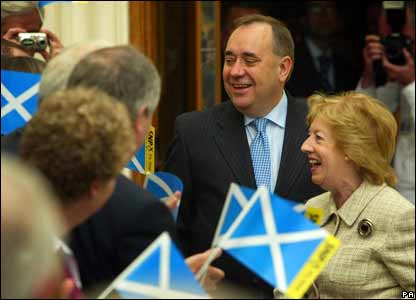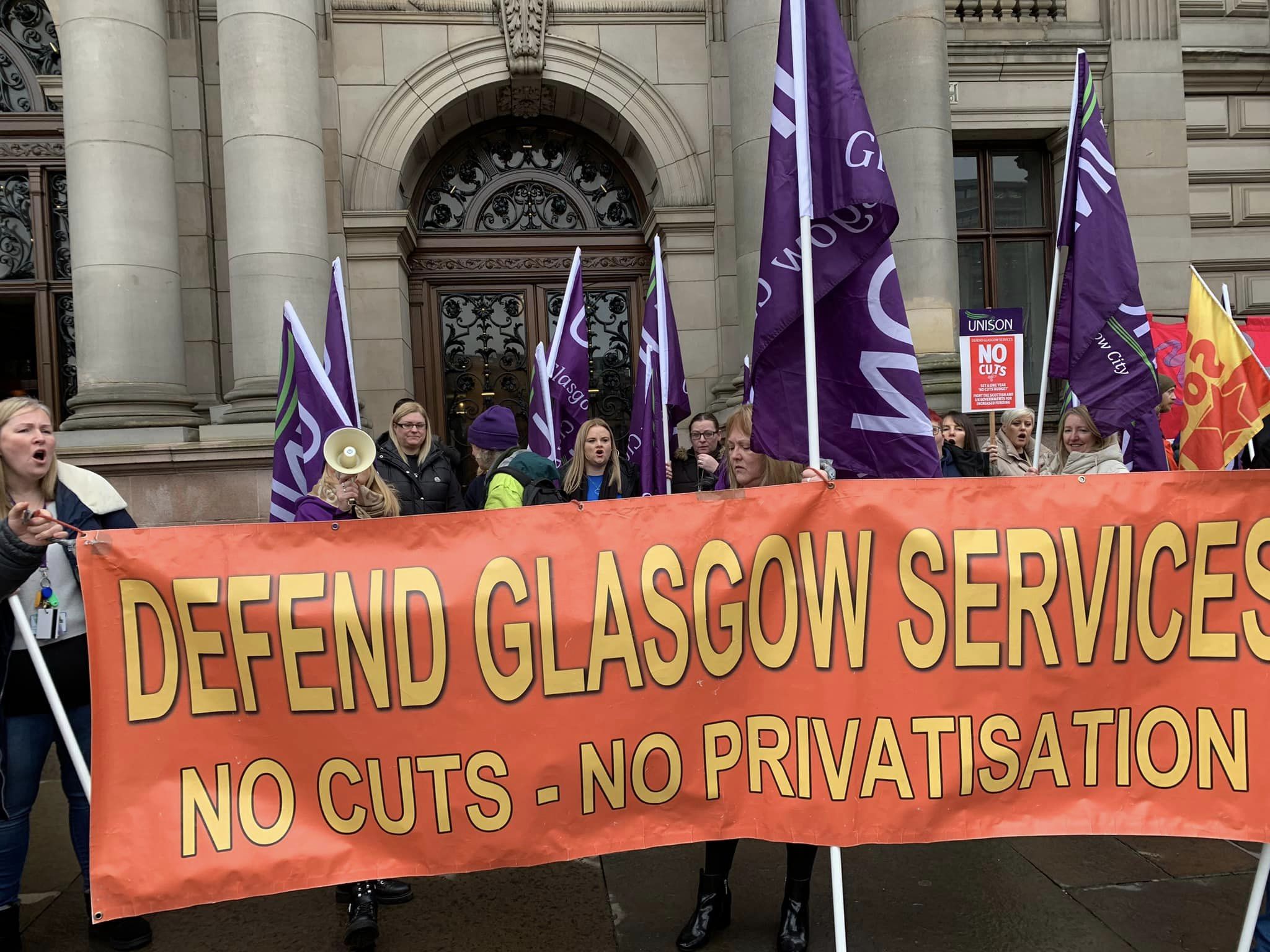Independence referendum date set for September 2014

Thursday 18th September 2014 has now been named by the SNP government as the date of the independence referendum. It’s a vote that will take place against the backdrop of unprecedented economic stagnation facing Scottish and British capitalism and deepening austerity.
“We believe that an independent Scotland will be a more prosperous and a more just country. Prosperity and fairness, these will be the twin pillars of our campaign in the run up to 2014”
So said Alex Salmond (pictured above) in response to questioning in the Scottish parliament about the SNP’s plans to cut corporation tax for big business in an independent Scotland.
The SNP leadership’s case that independence can both deliver economic growth for capitalism and an end to the cuts offensive, will come under intense scrutiny over the next 18 months.
Socialist Party Scotland, while supporting a Yes vote in 2014, will not flinch from exposing the utterly false idea that both big business and working class interests can be reconciled. As the saying goes, you cannot serve two masters at the same time.
Working class people, along with big sections of the middle class, are seeing their conditions of life savagely undermined by the austerity offensive.
Living standards are plummeting, a result of attacks on benefits, wage freezes and hikes on pension contributions. And this is going to continue for years. The logic of capitalism dictates that the working class be made to pay for the crisis infecting the profit-system.
The only way out is to build a mass movement of organised resistance against the ConDem government – starting with a 24-hour general strike across the economy. Linked to this is the need to advocate a programme of socialist change, based on democratic public ownership of the major sectors of the economy.
However, for many working class people the independence referendum will be seen as a chance to step away from the nightmare of cuts and increasing poverty. Currently, those who say they will vote Yes in 2014 stands at 34%.
But, support for independence is higher among the poorest sections of society with 43% intending to vote Yes from the “most deprived” areas of Scotland. 53% of those living in council and Housing Association accommodation say they will back independence. 49% of those polled who were unemployed and on sickness benefits said they would vote Yes.
brutal cuts
The impact of the Bedroom Tax and other brutal welfare cuts is likely to push support for independence even higher among those directly affected.
The official Yes Scotland campaign, dominated by the SNP, has recently sought to appeal to the widespread anger at the savage cuts programme of the ConDem government with adverts and slogans including “Austerity is made in Westminster” and “while Scotland opposes, Westminster imposes”.
The SNP’s pledge to abolish the Bedroom Tax after independence and reverse some of the other attacks on welfare, is also accompanied by the Scottish governments own imposition of cuts, pensions increases and real-terms wage cuts on hundreds of thousands of workers.
Nevertheless, there could be a marked increase is support for a Yes vote in the run-up to September 2014, given the desperation and suffering facing many as the cuts bite even deeper.
During the referendum campaign Socialist Party Scotland will be campaigning for an end to all cuts and the need to build a new mass working class party that will oppose austerity tooth and nail.
Only by fighting for an independent socialist Scotland, linked as part of a socialist confederation with England, Wales and Ireland as a step to a socialist Europe can an end to capitalism and austerity be found.
SNP’s failed model
There has also been a raging debate over the economic viability of an independent Scotland between the SNP and their “Better Together” opponents.
Alex Salmond and the SNP leadership have used the rising oil price and a new splurge of investment in oil and gas extraction to claim that the birth of an independent Scotland would coincide with a “new oil boom”.
With an independent Scotland likely to be assigned 80%-90% of oil revenue, the SNP have pointed to Norway to show what would be possible.
However, the example of Norway needs to treated with caution. The Norwegian state accrues around five times more from oil and gas per year than the assigned revenues to Scotland from North Sea oil.
This is mainly due to the fact that the Norwegian government nationalised a large part of the sector in the 1970’s, resulting in a far greater share of oil revenue going to the state, rather then foreign multinationals. In an independent Scotland the SNP only intend to collect from the oil multi-nationals the current scandalously low levels of Corporation Tax, which the SNP want to cut even further.
nationalisation
The demand for the nationalisation of oil and gas under democratic working class control would release tens of billions more than under the SNP’s timid plans. This measure, alongside public ownership of the renewable energy sector could allow for a planned and rational investment into jobs, housing and public services, while protecting the environment.
Even with oil, an independent Scotland that refused to carry out socialist measures, would face real economic problems. Capitalism is emeshed in a global crisis that according to many is historically without parallel.
There is no way of delivering so-called “Nordic” standards of living under a system intent on driving the majority of people into the dust.
Over the last years Norway has seen the number of children living in relative poverty nearly double – up from 6 percent ten years ago to 10 percent last year. Norway is ruled by a so-called left government – a coalition of Social democracy, Socialist Left and the Centre party – and last year alone that government twice used emergency powers to force striking workers, amongst them offshore oil and gas workers who has been on strike for 16 days, back to work.
The example of Sweden, again used regularly by the SNP, is a warning rather than a model to emulate. The “social democratic” settlement of a strong welfare state has been obliterated over the last twenty years. “Sweden has reduced public spending as a proportion of GDP from 67% in 1993 to 49% today. It could soon have a smaller state than Britain.” The Economist. February 2013
This counter-revolution has involved the dismantling of a majority of the social gains won by the working class in Sweden through mass privatisation and cuts to welfare.
John Swinney has claimed that Scotland, i.e. Scottish capitalism is in a stronger position than that of the UK. But it’s like trying to compare a frying pan with a fire as far as the working class is concerned.
Recent figures for example have shown that Scotland is running a smaller deficit than the UK as a whole, by around £4.4 billion. But that is still 5%-6% of GDP. After independence Scotland’s public sector debt, estimated by the SNP, would be 72% of national wealth.
According to the “rules” of the bond markets, credit agencies, the Bank of England and the European Union, this would require deficit reduction measures to be taken.
In other words cuts would continue after independence. Only a programme of wealth redistribution, underpinned by the building of a planned, publicly owned and controlled socialist economy would end the austerity offered up by all the main pro-capitalist parties.



